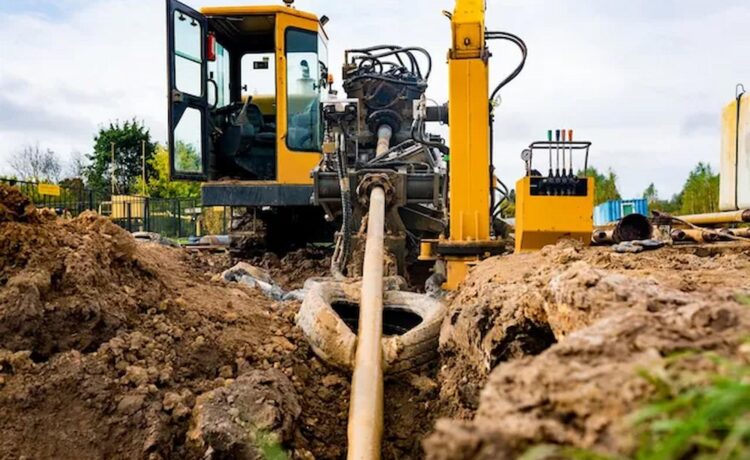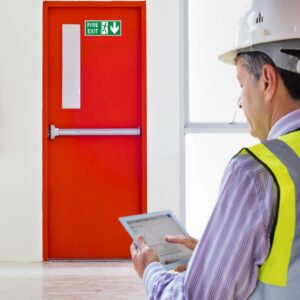Moling services are revolutionising the way underground utilities are installed and maintained. Discover the key benefits of this efficient, non-invasive technique: saving time, money, and the environment.
Underground utility installation and maintenance have come a long way, with modern technology making the process easier, faster, and more efficient. One of the most significant advancements in this field is the introduction of moving services. This method has transformed how water pipes, gas lines, and telecommunications cables are laid underground. Moling services offer a trenchless solution that minimises surface disruption and significantly reduces project time. As more people and businesses opt for this non-invasive approach, it’s essential to understand the key benefits of using moving services for underground utilities. This article explores how moving works, its advantages over traditional trenching, and why it’s becoming the preferred method for underground utility work.
What Are Moling Services? An Overview
Moling services refer to a trenchless method for installing underground utilities, such as water pipes, gas lines, and cables, without extensive digging. A “mole,” a pneumatically driven device, creates a tunnel underground through which the utility pipes can be installed. Unlike traditional excavation methods that require digging long trenches, moulding is less invasive and more efficient.
One of the critical advantages of moving is that it can be performed with minimal disruption to the surface. It is particularly beneficial in urban areas where digging up roads and sidewalks would cause significant inconvenience to the public. The moulding process involves only a few small access pits, which makes the process much faster and more cost-effective. Additionally, the moulding machine can navigate various underground conditions, such as soil and clay, ensuring that utilities are installed precisely.
2. Reduces Surface Disruption and Damage
Traditional utility installation methods often involve digging extensive trenches, which can cause significant disruption to the surface. Roads, pavements, gardens, and even driveways must be torn up to access the underground utilities. This type of work is time-consuming and costly in terms of repairs. Moling services solve these problems using a trenchless technique requiring only tiny entry and exit points.
One of the significant benefits of this method is that it minimises surface damage. Moling can be done without disturbing the landscaping, roads, or other surface structures. As a result, there is less need for post-installation repairs, which can be expensive and time-consuming. It also makes moulding an eco-friendly option, as it preserves the surrounding environment and reduces waste from unnecessary digging. Property owners and city planners alike appreciate less surface disruption’s convenience and cost savings.
Key Benefits:
- Minimal Damage: No need for long trenches or large-scale surface disruption.
- Cost Savings: Reduced costs related to post-installation repairs.
- Environmentally Friendly: Less soil displacement and waste generation.
3. Time Efficiency: Faster Installation and Less Downtime
When it comes to utility installation, time is money. Traditional methods can take days or weeks to complete, especially in areas with complex infrastructure. On the other hand, Moling services are much faster, reducing both the installation time and the disruption caused to daily activities. Because moving just requires small access pits, the installation process can proceed without lengthy preparations or large excavation crews.
For businesses and homeowners, this means less downtime. Roads can remain open, and homes or commercial buildings can operate without interruption. For larger projects, such as city-wide utility upgrades, this translates into massive time savings and a smoother overall process. Moving gets the job done quickly and efficiently for water mains or telecom cables.
Key Benefits:
- Faster Completion: Moling can reduce installation time by up to 50% compared to traditional methods.
- Less Disruption: Businesses and homes experience fewer interruptions.
- Fewer Preparations Needed: Only small entry and exit points are required.
4. Cost-Effective: Saving on Labour, Materials, and Restoration
Cost is crucial in any construction project, and moving services offer significant savings compared to traditional trenching. One of the primary reasons for this is the reduction in labour and material costs. With moulding, fewer workers are needed since digging extensive trenches or moving large amounts of earth is unnecessary. Additionally, less material is required to restore the surface, as moulding causes minimal disturbance.
Beyond labour and material savings, smoking also reduces the need for extensive restoration. With fewer repairs required for roads, driveways, or gardens, property owners save on post-installation costs. These combined savings make moving an affordable solution for construction and commercial projects.
Key Benefits:
- Reduced Labor Costs: Smaller crews are needed for moving projects.
- Lower Material Costs: No large-scale excavation means less material is needed for restoration.
- Less Post-Installation Restoration: Fewer repairs and re-landscaping are required after the installation.
5. Eco-Friendly Solution for Utility Installation
As environmental concerns continue to grow, more industries are seeking ways to reduce their impact on the planet. Moling services are inherently eco-friendly because they significantly reduce the amount of soil disruption and waste generated during the installation process. Traditional excavation can lead to erosion, displacement of soil, and damage to the surrounding environment. By contrast, moulding uses minimal digging, which helps preserve the natural landscape and reduce the carbon footprint of construction projects.
Another eco-friendly aspect of moulding is its ability to work in confined spaces. Moulting can be used in areas with existing infrastructure, such as gas lines or electrical cables, without disturbing these utilities, reducing the risk of environmental hazards, such as gas leaks or soil contamination.
Key Benefits:
- Minimal Soil Disruption: Reduced risk of erosion and environmental damage.
- Lower Carbon Footprint: Less energy-intensive than traditional excavation methods.
- Safe for Existing Infrastructure: Moling avoids disturbing other underground utilities, reducing the risk of environmental hazards.
6. Versatility in Utility Installation
One of the standout benefits of moving services is their versatility. Moling can be used for underground utility installations, including water mains, gas lines, electrical cables, and telecommunications cables. This versatility makes moving the go-to solution for both residential and commercial projects. Moving offers a reliable and efficient installation method, whether installing utilities in a suburban neighbourhood or upgrading infrastructure in a busy city centre.
The technology behind moulding allows for accurate pipe placement, even in challenging underground conditions. Moling can navigate different types of soil, from loose sand to dense clay, ensuring that the installation process remains smooth and efficient. Additionally, its flexibility means it can be used for both short distances and longer stretches, depending on the project’s requirements.
Key Benefits:
- Suitable for Various Utilities: Works for water, gas, electrical, and telecom lines.
- Adaptable to Different Soils: Effective in a wide range of underground conditions.
- Ideal for Short and Long Distances: Works for small residential projects and larger commercial installations.
Conclusion
As explored throughout this article, moulding services provide numerous benefits for underground utility installation. Moving is an innovative, modern solution for homeowners and businesses, from minimising surface disruption to reducing costs and speeding up installation times. Its eco-friendly approach, versatility, and cost-effectiveness make it the preferred choice for projects of all sizes. Whether laying water pipes in a residential neighbourhood or upgrading gas lines in a bustling city, moving services offer a reliable, efficient, and non-invasive installation method.
The future of utility installation is clear: as the demand for fast, cost-effective, and environmentally responsible methods continues to grow, moving services will remain at the forefront of the industry. By embracing this trenchless technology, property owners and utility companies can enjoy the many benefits of moving services.





